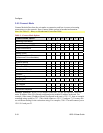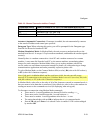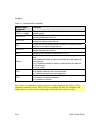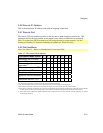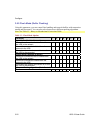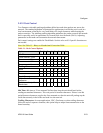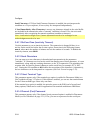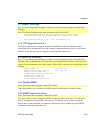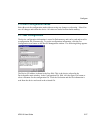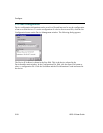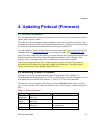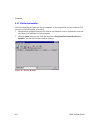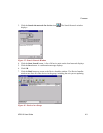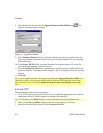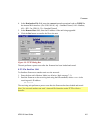
Configure
3-26
UDS-10 User Guide
3.8.3 Disable Telnet Setup
This setting defaults to the N (No) option. The Y (Yes) option disables access to this
Configuration Menu by Telnet (port 9999). It only allows access via the Web pages and the
serial port of the unit.
3.8.4 Disable TFTP Firmware Upgrade
This setting defaults to the N (No) option. The Y (Yes) option disables the use of TFTP to
perform network firmware upgrades. With this option, firmware upgrades can be performed
only by using a *.hex file over the serial port of the unit.
3.8.5 Disable Port 77FE (Hex)
Port 77FE is a setting that allows DeviceInstaller, Web Pages, and custom programs to
configure the unit remotely. You may wish to disable this capability for security purposes.
For more information about remote configuration, see the Lantronix Embedded Integration
Kit user guide on the Lantronix Web site www.lantronix.com.
The default setting is the N (No) option, which enables remote configuration. You can
configure the unit by using DeviceInstaller, Web pages, Telnet, or serial configuration. The Y
(Yes) option disables remote configuration and Web pages.
Note: The Yes option disables many of the GUI tools for configuring the Device Server,
including the embedded Web Page Configuration tool.
3.8.6 Disable Web Server
This setting defaults to the N (option). The Y (Yes) option disables the use of the Web Page
Configuration tool that is built into the unit.
3.8.7 Enable Enhanced Password
This setting defaults to the N (option), which allows you to set a 4-character password that
protects the Configuration Menu via Telnet and Web pages. The Y (Yes) option allows you
to set an extended security password of 16-characters for protecting Telnet access.
3.9 Factory Defaults
Select 7 to reset the unit’s Channel 1 and Enhanced Security to the factory default settings.
The server configurations (IP address information) remain unchanged.



